Introduction
“Erasmus is the reason why European Union will survive” (publico, 2017), ever since a child becomes an adult, when he steps into the choice of university, he confronts the life of a solitaire person, away from his family, from his friends, from his favourite places near home, and safety to look for the new experiences.
The Erasmus program started in 1987 and it has been the link that creates opportunity to new university students for the journey around Europe, to a new city where they can meet new places, cultures and friends.
These decisions are now more and more common and students go into university already thinking where to go for their mobility program, because Erasmus is so successful and the mobility is global, complementing the studies in a new way is more exciting.
Globalization is not only about marketing and trading but the exchange of knowledge, the 21s century is the Erasmus Era when quality and diversity meets in one location.
This work intends, with the survey, to approach these students of mobility programs that have been in Kauno Kolegija and took the experience. Such was the curiosity during the contact of the author with these students, about the why they chose Kauno Kolegija when these students come from Europe or another international country. After a while considering this, the question that started this scientific article showed up:
What is the motivational factor for mobility students to choose Kauno Kolegija?
The goal of this work is to evaluate the motivational factor of choosing Kauno Kolegija and their experience during their stay to provide KK some possible way to increase the income of students from the countries where the rate is lowest. Alongside of:
Understand why different people show different reactions to their stay;
Check if the studies in their country are also satisfying in Kauno Kolegija;
To this moment the author hasn’t found works that approach this problem, which makes this work a challenge. The most similar work comes from (Karina Oburone), 2010, “The case study of the Erasmus Programme in Latvia: Stereotypes and European Identity”.
This work has a Literature review on theoretical information, which seeks to describe in detail the Kauno Kolegija and Multiculturalism, marketing and tourism and motivational factors. The methodology used to achieve the information, about the instruments used, how it was collected, and the students who participated in it. The results of the survey are presented by graphical figures and discussion. This work was elaborated in all its format and structure using the APA – American Psychological Association 6th edition.
The overall objective of this paper is to aid KK on improving their mobility program towards the increase of incoming students, which by itself provides a big priority for the school reputation and for the students’ experiences.
Literature Review
This chapter is about important themes to the survey such as, Kauno Kolegija, Multiculturalism, marketing and tourism and motivational factors. The objective of this chapter is to provide information about each subject in order to better understand the work done by the survey. It is of great importance to be able to identify key topics and words that better explain the following work in progress. The chapter is also an agglomeration of information taken from different authors in order to complete and explain a subject in study. The sources of this information were taken from different articles and authors so that the information gathered is reliable and differentiated.
Kauno Kolegija and Multiculturalism
The center of study for this mobility program that the surveyed students chose is Kauno Kolegija, a university of applied sciences that is divided into five different areas of study, “Kauno Kolegija / University of Applied Sciences was established on 1 September 2000 after the binary higher education system consisting of two types of higher education provided by colleges and universities was introduced in Lithuania”, (Kolegija, 2000); this school is located in the heart of Kaunas city of Lithuania, 80Km away from the capital city Vilnius.
We can understand the intercultural exchangeability by looking into the mobility programs as an internationalization of higher education, some kind of process to integrate intercultural into teaching. “Intercultural describes communities in which there is a deep understanding and respect for all cultures. Intercultural communication focuses on the mutual exchange of ideas and cultural norms and the development of deep relationships. In an intercultural society, no one is left unchanged because everyone learns from one another and grows together”, (Schriefer) students of Erasmus are in Kauno Kolegija to not only study but also practice intercultural activities. UNESCO has emphasized the importance of mobility in the World Conference on Higher Education, which was held in Paris in 1998, at this meeting the mobility programs were considered a means that enabled young students and teachers to grow awareness of the world and an interest in preparing themselves for living in an interdependent world.
The Erasmus program is described as one of the symbols of construction of European identity and one of the most successful examples of promoting European integration, “Bringing students to Europe, bringing Europe to all students” (Neack, 2002), this statement enables us to better understand how every country is connected by its knowledge sharing system. Mobility exchangeability is increasing due to its own success, this project created so many opportunities for young people to travel and learn from a new language and methodologies that their experience has been the conductor of influence to new students every year who also want to participate in the mobility programs.
The Erasmus program started in 1987, created by the European Economic Community Council of Ministers and it’s the most emblematic program in the EU for education and formation. Only in the first 20 years, “near 1,7 million students have taken part of the study program under Erasmus” (CE, 2008), with a goal of delivering equality of instruction and formation inside the European Union, to evidence competences, knowledge and innovations, internationally.
Marketing and Tourism
For a mobility program, schools might be seen as a product, or a “vacation” ticket, it is the experience of this period spent by the student that will provide a result in the end, “It is of extreme importance that the company realizes the need and significance of continuity in a customer relationship”, (Ravald & Grönroos, 1996) such as Kauno Kolegija towards the incoming students that perform a mobility program, therefore Kauno Kolegija has to keep a good relationship with these students in order to keep its incoming ratio from each country and increase it.
Tourism is also a huge factor when selecting a destination, the reason why a student wishes to know a country, for its cultural value and its traditions. “Considering the widespread economic impact of this particular sector, as well as its spatial extent, tourism should be given special attention in economic geography”, (Brouder, Clavé, Gill, & Ioannides, 2017) meanwhile Kauno Kolegija takes into account all the touristic journeys a student can participate in, by doing tourism during his stay in the country or around it with the help of student groups such as ESN – Erasmus Student Network that schedules and prepares trips around and outside the country of destination.
Motivational factors
The following chapter is composed of two groups, the first being the concept of motivation where we study what motivation is and the second – the types of motivation existent. The objective is to display intrinsic and extrinsic factors as the main locomotors of choice for a student to pick a mobility destination.
Concept of Motivation
The term motivation is derived from the word “motive”, therefore motives are forces which induce people to act in a way so as to ensure fulfillment of a particular human need at a time. Behind every human action there is a motive. “Understanding why we do the things we do has long been a goal of psychologists. From early on, the field focused on two primary types of explanations for behavior: basic biological needs or drives connected to survival and procreation (e.g. hunger, thirst) and extrinsic rewards or punishments. Both types of explanations suggest that behavior is motivated by the need or desire to achieve particular outcomes (e.g. restoring a tissue deficit to equilibrium, acquiring a reward, or avoiding punishment). Motivation thus energizes and guides behavior toward reaching a particular goal.” (Carol Sansone), these are all the reasons behind motivational factors under only two factors, intrinsic and extrinsic.
Types of motivational factors
Under the concept of motivation are the types of motivation, these can be classified as two types, more specifically the intrinsic and the extrinsic type of motivation, which are related to the external motivations and personal motivations that guide a person into accomplishing an action or making a choice. “Several specific motivational factors have come to light in recent educational research from the social cognitive approach including: intrinsic goal orientation, extrinsic goal orientation, task value, control of learning beliefs and self-efficacy for learning and performance.” (Howey, 2008), showing that motivation is driven by something, under a reason for our actions. It is these motivational factors that play a role in the decision making of destination selection for the mobility program of the students, their family or their personal motives are what balance the scale of decision towards their top of mind choices.
Intrinsic motivational factors
For the first interaction of motives that guide a person, the intrinsic motivation is the one that comes from personal reasons, derived from intangible factors. For example, someone who bakes cakes for his own pleasure is relying on intrinsic motivation. This example shows that students also have personal motives to pick a destination, such as knowing more from a country’s culture and travel to a new destination. “Having an intrinsic goal orientation towards an academic task indicates that the students’ participation in the task is an end all to itself rather than participation being a means to an end. Also included here is the degree to which students perceive themselves to be participating in a task for reasons such as challenge, curiosity, and mastery.” (Garcia, 1991). The destination selected by these mobility students has to do with their previous interactions with online reports, family discussions, friends advice or even school teachers and coordinators who influence directly or indirectly their choice of destination for their personal goal such as travel, academic and professional growth.
Extrinsic motivational factors
Extrinsic type of motivation arises from outside the individual as opposed to intrinsic motivation, which originates inside of the individual referring to behavior that is driven by external rewards such as money, grade and praise. In other words, “extrinsic goal orientation concerns the degree to which students perceive themselves to be participating in a task for reasons such as grades, rewards, performance evaluation of others and competition. Students with high extrinsic motivations engage in learning tasks as the means to an end. The main concern here is that the students with high extrinsic motivational factors relate to issues rather than those directly related to participating in the task itself.” (Garcia, 1991), which is also a reason to be motivated but at the same time a concern, because the student might have other reasons behind wanting good grades, like family problems or lack of money. A person who bakes cakes to sell for profit is using extrinsic motivation, while the extrinsic motivator is when a person is motivated by external factors to gain tangible rewards. This shows that a mobility student can perform a mobility program in order to gain a scholarship and travel, or because his parents would finance the trip allowing the student to travel. It is of no surprise that an external factor can be very decisive in a choice, yet this survey seeks to show if these factors are or are not more important than intrinsic motivations, also their academic, professional and personal reason behind each decision are what makes each student so unique for this survey.
Methodology
This chapter seeks to explain in detail the selection used for the research methodology. It is of importance to express in detail why a survey and a different way of research was selected to reach the objective of this article, this questionnaire was filled by mobility students that are or were performing their studies in Kauno Kolegija using their mobility program of choice. This chapter is divided into three parts that include a research design on why a survey was selected. The questionnaire shows how the survey was elaborated using different types of scaling for the answers and finally the framework for data analysis that was chosen for the final results of the gathered information.
Research Design
In this work, the best choice for the design of the research was a survey with multiple choice answers, to be a more cohesive and direct approach, to get the best possible answer from the students in a minimum required time using the Internet Google survey to interact with former students from a distance, since most of them are back to their home countries or are too hard to meet in person. The survey was by far the best choice for this study because of the difficulties of meeting with mobility students in person to gather information.
Questionnaire
The investigation has been conducted using a survey to achieve the answers and as an instrument of work the survey took the form of a Questionnaire with multiple answers.
In this survey topics like social-demographic and variables related to the adaptation and satisfaction of the students are approached, such as age, gender, degree, country of origin, knowledge of the language but most importantly the motivational factor why they choose Kauno Kolegija.
The used scale is the “Likert scale” from 1 to 5 being 1 “minor contribution or low satisfaction” and 5 being “significant contribution or very satisfied”, along with multiple choice questions.
These mobility students were ensured the anonymity and confidentiality of their answers. It’s a structured questionnaire with predominantly “closed” questions, designed to be a quantitative questionnaire, based on interviews carried out by the researcher online using Google survey.
The questionnaire is comprised into several sections to enable a wide range of issues to be addressed. These included the students “background characteristics (age, gender, nationality, etc), reasons for choosing to study abroad, reasons for opting for a EU country and Lithuania, Kauno Kolegija, high education facility and key motivations affecting the decision to study abroad.
Framework for Data Analysis
The research is analyzed using an SPSS program by Google to best evaluate the answers with a graphical display of percentages. This program is included in Goggle survey; as soon as a surveyed person is interviewed, the program automatically registers the answers and develops a graphical display with a 0 to 100 percentage of each answer.
Results
For this chapter, the survey answers will be analysed and the results are going to be shown as a graphical figure in order to present the findings of the survey. These results are to be used by Kauno Kolegija to better serve incoming students, which is the targeted audience of the survey, 53 mobility students replied to this survey about their motivational factors for choosing Kauno Kolegija.
Survey Results
Three thematic categories were identified, (Figure 1), personal, academic and professional motivations were selected, including in each of them intrinsic and extrinsic motivational factors, in order to develop the questions for the survey that goes in line with one of the objectives from this article. It is not only important to know how students get motivated to select Kauno Kolegija but also to know their motivation to go on a mobility program

Figure 1: Motivational factors
Source: Self-made.
The first element of the survey was the mobility students’ age, which represents 83% of the students in an average age of 18 to 25 years old. This age represents a group of students that in their majority use mobility studies during their bachelor degree.
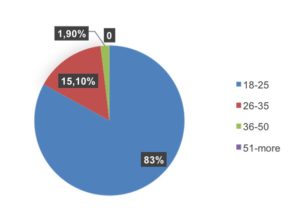
Figure 2: Participants’ age
Source: Self-made.
Even though Kauno Kolegija is mentioned many times as being the selected school for this survey, Kauno Kolegija is divided into 5 faculties that welcome mobility students, noticing that the majority of these incoming students study in the Faculty of Management and Economics, Faculty of Medicine and the Faculty of Arts, these three faculties intake 74% of all incoming students.
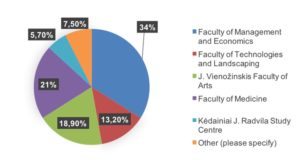
Figure 3: Participants’ faculty of studies/practice
Source: Self-made
In Figure 4 it is shown that 83% of incoming mobility students only stay for one semester, meaning that they either go back to their home country or choose a new Erasmus destination for their second semester.
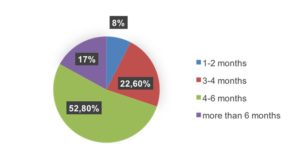
Figure 4: Duration of studies/practice at Kauno Kolegija
Source: Self-made.
The survey (Figure 5) showed that the majority of incoming students are from Turkey and Latvia, showing that many countries don’t know about or lack the information about Lithuania or Kauno Kolegija as a mobility destination.
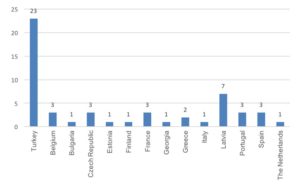
Figure 5: Participants’ countries of origin
Source: Self-made.
Based on the analysis of the survey (Figure 6), 66% of the interviewed students are female and 34% are male, the following results provide information that female students are more motivated to study abroad.

Figure 6: Participants’ gender
Source: Self-made.
The survey’s objective was to find out if mobility students were motivated by intrinsic or extrinsic factors to perform a mobility program, these factors were previously picked and selected by 3 main groups – academic, professional and personal – which as the following analysis (Figure 7) clearly captures the eye to the fact that almost all students replied to the survey selecting intrinsic motivational factors for the decision to undertake a mobility program. The intrinsic motivational factors also show that they seek to answer to all 3 groups – they look motivation for their personal life, for the academic growth and also for their future professional life.
The question in study showed that the majority of the interviewed students (40 out of 53) selected, “To obtain international experience in the area of my profession” as well as “To travel” (35), “Improve academic knowledge” (34) or “to improve professional English skills” which shows that all of the motivational factors – personal, professional and academic – are represented. This can be understood as a very positive way of describing mobility students’ needs.
Observing the following question, the academic and professional intrinsic motivations “versus” personal motivations, it is recognizable that the personal factor plays a very important role for the motivational factor when choosing to do a mobility study. This includes choices like, “to travel” (35 answers), “to have a good time” (29), “to live in a foreign country for a while” (29), “to be independent” (20) and “to get familiar with a new culture and traditions” (30), which states that these young students seek new adventures while increasing their personal experience and knowledge about the world. Choosing Lithuania and Kauno Kolegija might be a strategy for the students to be able to travel to more countries by spending less money in their mobility destination of choice. Meanwhile the academic and professional motivations are more valued by the students than their personal motivations, since more students selected these in a higher number, for the academic and professional motivations, 40 out of 53 surveyed students selected that the most important is “to obtain international experience in the area of their profession”, 34 chose “to improve my academic knowledge” and 36 selected “to improve professional English skills”. These results provide an understanding that students value their future and knowledge over the personal joy, which therefore is seen as maturity and responsibility towards their main objective which is to finish their degree.
Considering that most of the interviewed students were female (35) and 16 replied that personally they seek to be independent as a motivation for their mobility decision, while only 4 male students out of 18 selected the same answer. This represents a need of the female students to reach maturity which is also linked to the desire of “getting out of their comfort zone“, and the need “to get by on their own”, because they are living far from their families and they desire to expand their view of the world. The previous statement is followed by a motivation that is also personal and intrinsic, “to travel”, which was selected by 28 female students out of 35 and 7 male students out of 18, in contrast to the previous observation it is understandable that female students seek “new experiences and horizons”.
Meanwhile even though extrinsic factors were not selected in a big scale, being the major ones with 7 people in total, “to earn more in the future” and “to gain money from scholarship”, it still provides information that money is a big extrinsic factor for some students to pursue their objectives, these motivations are personal and professional, which in this case shows that some students are in need of money or want to have more money in the future.
It is important to state that the elements varied among the different people surveyed. These references seem to be related to social, demographic, cultural and stage of formation characteristics of the respondents.
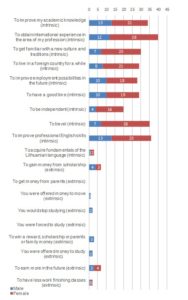
Figure 7: Motivational factors to participate in a student exchange programme
Source: Self-made.
The motivations previously mentioned are now studied in a more profound way, this is because the main study of the article is exactly why these mobility students chose to study in Kauno Kolegija, from all the choices provided and given in the survey, they chose mainly that they were interested in traveling to a foreign country in order to visit as many countries as possible, while 27 out of 53 also say they are interested in Eastern European countries. The Language being a decisive matter when picking a destination, students look for a school that provides classes in English, in this we have 20 out of 53 students. After this main reason of choice to pick Kauno Kolegija, students look for advice in a common “word of mouth” around their friends in school and their teachers or coordinators, being most of the influential decision from students that had previously come for studies or internship at Kauno Kolegija, and coordinators have almost no influence in their decision with 11 students selecting out of 53.
From these motivations, one that was also influential was the standard of living or cost of living in Lithuania, this doesn’t play an important role in selecting their destination, but it is still something that students worry about when choosing their mobility program.
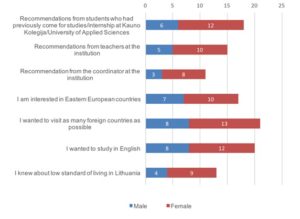
Figure 8: Motivational factors to choose studies at Kauno Kolegija/University of Applied Sciences
Source: Self-made.
Analysis of the following survey was to figure out how students spent their time during their studies or practice at Kauno Kolegija, the results showed that these students came to attend classes and not to perform internships, as well as not showing interest in learning the country of destination, in this case Lithuanian language but still finding motivation to learn about the country’s culture and traditions. These students also have a big desire to travel around the country and explore while keeping up with their responsibilities of attending lectures, which were self-sufficiently studied by the majority of the students.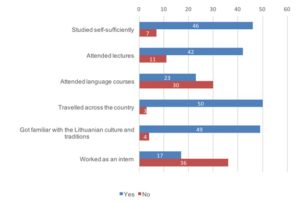
Figure 9: Activities performed during the period of studies/practice at Kauno Kolegija
Source: Self-made.
The experience of being in Kauno Kolegija for their mobility program was overall very positive, with a very satisfied and satisfied rate of 41 students out of 53, while only 9 think the experience wasn’t very pleasant or very satisfying, and only 3 showing some kind of disappointment.
The motivations previously mentioned are linked to the satisfaction of their experience, because their objectives when coming to their destination for mobility program were fulfilled, therefore the students show a very positive review of their experience.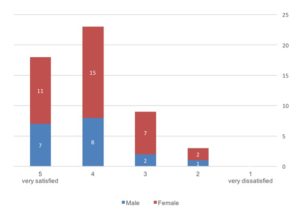
Figure 10: Level of participants’ satisfaction with the studies at Kauno Kolegija/UAS
Source: Self-made.
Conclusions
The material presented and discussed in this article allows to state that mobility students are becoming a phenomenon globally. It has become of a very great importance to Lithuania. Even though multiple motivational factors influence these students such as family, personal, cultural and social backgrounds, their language skills and others.
When choosing a mobility program, their personal, academic and professional motivations are influencing the choosing of the destination, in their formation and graduation path. This reinforces the idea of the challenge ahead to coordinate actions in order to maximize the benefits of the institution for the future incoming mobility students.
The analyses of the study enabled to observe that mostly young people participate in international mobility programs at the very beginning of their university education, which ends up revealing motivations that are connected to the personal and academic life. Their interest in knowing other cultures increases their maturity by finding themselves in an independent state. Personal motivations stand out, as the learning of a new culture and language improves. It is important to emphasize that this experience taken by these students can change due to their scholarship and family income, some of them try to pick a low standard (cost) country of living in order to have a better experience.
In view of the fact that more and more students join a mobility program each year, it is of most importance to keep groups such as “Erasmus Student Network” or “ESN” to guide and help these students in a foreign country, in order to increase the personal, intercultural, academic and professional growth of their experience while abroad.
This article with a survey to 53 mobility students seems to show that the majority of the students who participated in the mobility program to Kauno Kolegija were motivated by intrinsic and extrinsic factors, but mainly intrinsic. The results showed that the main motivation of these mobility students is to experience a different country for professional reasons while also improving their academic and cultural knowledge.
It is of least importance to them to earn more money in the future, to win a scholarship, to be away from home or to have less work in classes. These mobility students seek motivation in their own personal gain and not external, by being able to experience new and exciting things while learning more about different countries or cultural history during the study for their degree.
The information gathered showed that mobility students that choose Kauno Kolegija as their destination, have done so in order to travel around the country or countries close and because their friends or colleagues mentioned and recommended Kauno Kolegija as a destination by a “word of mouth” methodology.
In conclusion, Kauno Kolegija should be able to identify what students want when they select their destination for mobility, and offer these students the possibility to join together the responsibility of a class work and the adventure of a new experience away from their home country and family.
It is of big hope that the knowledge shared here and presented may encourage Kauno Kolegija or other schools to learn more about their incoming students, in order to provide them with the best experience they can get.
References
- Breitfeld, F. (2010). Erasmus of rotterdam.
- Brouder, P., Clavé, S. A., Gill, A., & Ioannides, D. (2017). Tourism Destination Evolution.
- Carol Sansone, J. M. (s.d.). Intrinsic and Extrinsic Motivation: The Search for Optimal Motivation and performance.
- Drucker, P. F. (1954). The Practice of Management. New York: Harper-Collins Publishers.
- Franklin, A. (2003). Tourism: An introduction. london: Sage publications.
- Garcia, T. M. (1991). A manual for the use of the Motivated Strategies for Learning Questionnaire (Tech. Rep. No. 91-B-004). Ann Arbor, MI : The University of Michigan, School of Education.
- Howey, S. C. (2008). http://www.nacada.ksu.edu/Resources/Clearinghouse/View-Articles/Motivation.aspx. Obtido de nacada.
- Kolegija, K. (2000). Kauno Kolegija. Obtido de www.KaunoKolegija.lt.
- Neack, D. N. (2002). Global Society in Transition.
- (2017). www.publico.pt. Obtido de comissão e parlamento europeu.
- Ravald, A., & Grönroos, C. (1996). The value concept and relationship marketing.
- Schriefer, P. (s.d.). https://www.springinstitute.org/whats-difference-multicultural-intercultural-cross-cultural-communication/. Obtido de www.springinstitute.org.
- Zerman, S. (2014). The Impacts of Study Abroad Opportunities on International Students.












